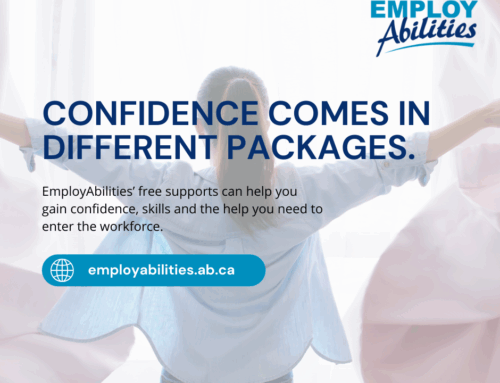TIP SHEETS FROM ALBERTA LEARNING INFORMATION SERVICE

Today, more job seekers with disabilities are entering the workforce. For persons with disabilities, finding and keeping work is usually no different than for those without disabilities. However, there may be additional things to consider, such as accommodations
What are accommodations?
As a person with a disability, you may need specific accommodations from an employer to help you become a successful employee. Accommodations are changes made to rules, standards, policies, workplace cultures and physical environments, ranging from power-assisted doors to flexible hours of work. Under the Alberta Human Rights Act, employers have a duty to accommodate—to take reasonable steps to allow for an employee’s individual needs.
Types of accommodations?
Most accommodations are easy to introduce and cost relatively little. While some government funding is available, many employers choose not to pursue funding. Accommodations introduced for employees often benefit customers, as well.
Disability-related workplace accommodations may include
- – making workplace facilities accessible
- – modifying work schedules
- – restructuring the work
- – acquiring or modifying equipment, software or devices
- – providing support services or qualified assistants
- – changing work locations
- – retraining or reassigning employees
Benefits of the changing workplace
Many employers are introducing changes in the workplace to meet business challenges as well as the needs and preferences of their employees. As an employee with a disability, workplace trends like these could also benefit you:
- – New technologies are constantly being developed to meet demands for productivity and effectiveness.
- – Teleworking or tele-commuting—working from home or an off-site location—is on the rise.
- – Flexible working arrangements such as job sharing, flextime and temporary placements are more common.
- – Workplaces are introducing larger computer monitors, improved lighting and ergonomic chairs to reduce – physical strain.
Tips for taking with employers about accommodations
Whether you’re currently employed or you’re looking for work, these suggestions will help you prepare to talk about the accommodations you need:
- – Take care of your own needs, if possible, by providing equipment or technology. This removes a potential barrier for employers who are considering your application.
- – Be open, honest and clear when you request an accommodation. Give examples so the employer can understand what’s involved.
- – Explain what your specific needs are. Don’t expect your employer or co-workers to anticipate them.
- – Know how much it costs to provide physical accommodations you need and where they can be purchased.
- – Know what funding is available for accommodations and show your potential employer how to access it.
- – Offer solutions and suggestions. Emphasize what the accommodation will enable you to do.
It’s estimated that the majority of job accommodations required for persons with disabilities can be made for less than $500. Know the facts when you present your request for accommodations. Show employers the solution. You’ll be demonstrating the positive attitude and problem-solving skills you’ll bring with you to the job.





